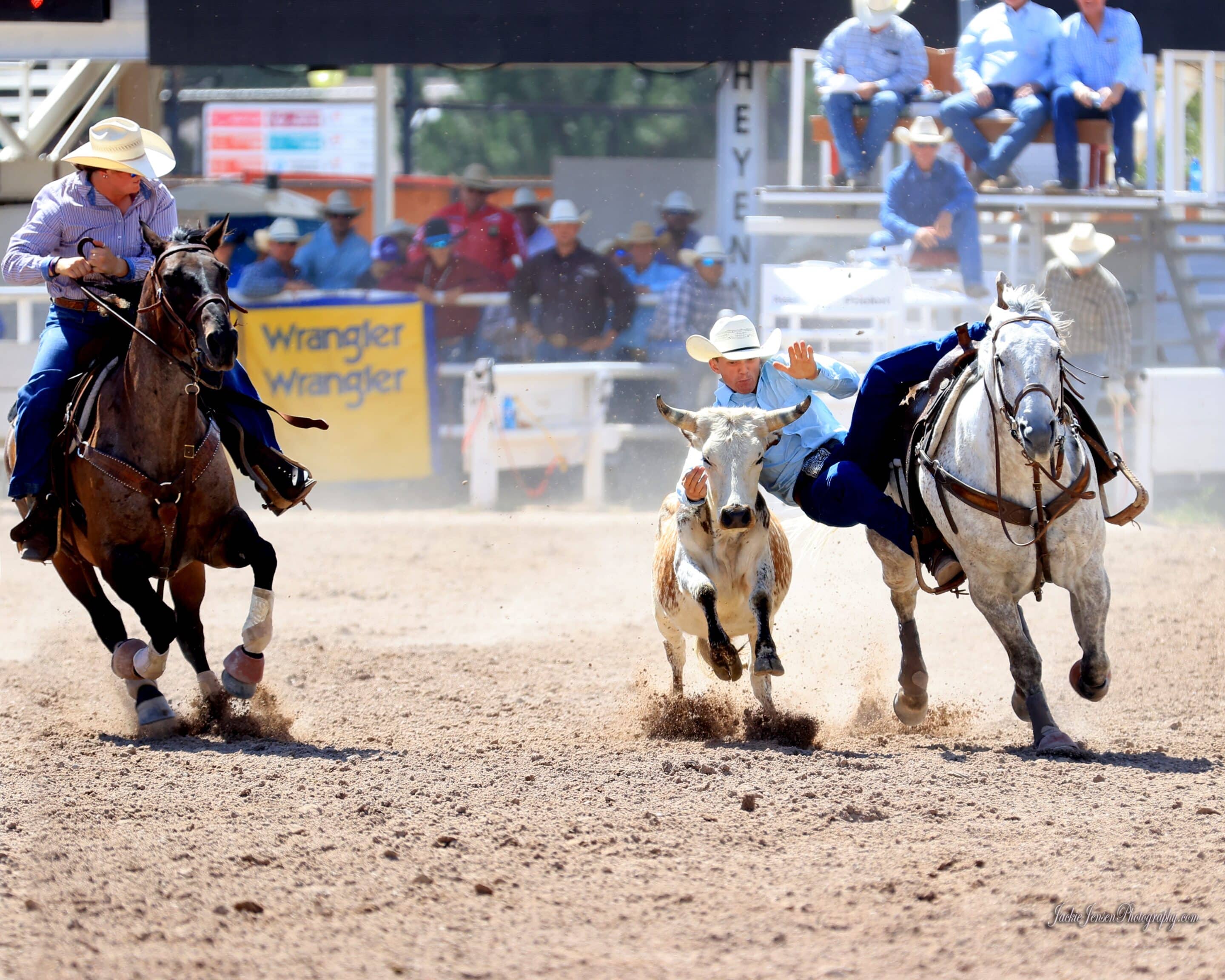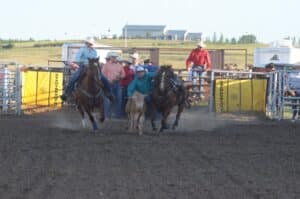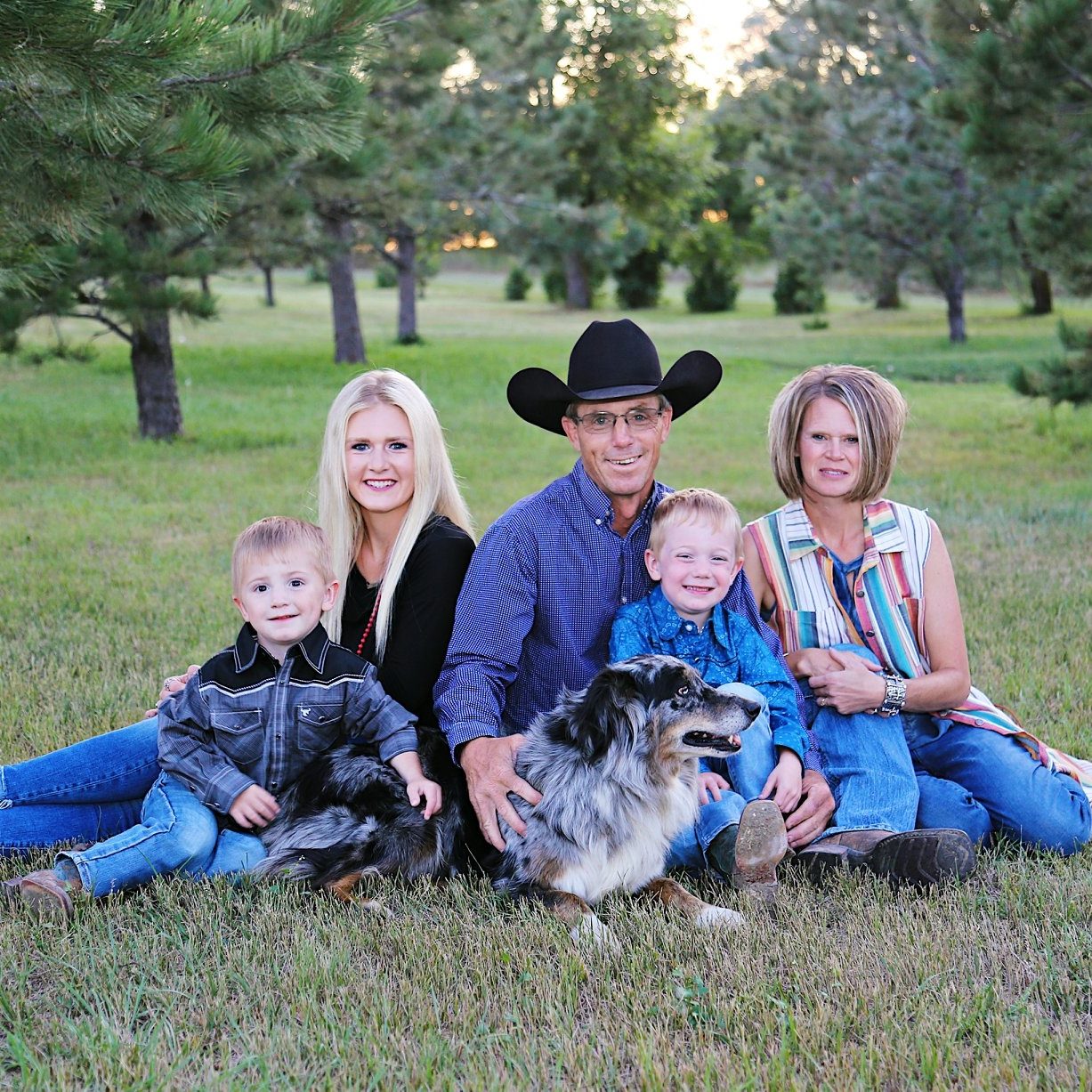Hazers: Two Women Talk About Being Part of the Team

Sierra Lee hazing at the Cheyenne Frontier Days [Photo: Jackie Jensen Photography]
Two Dakota cowgirls are leaving their mark in the arena as the right-hand men (women) in the steer wrestling. Sierra Lee of Rhame, N.D. and Savana Johnston of Elm Springs, S.D. are demonstrating their skills and consistency as hazers.
The hazer is a the other half of a bulldogging team who keeps the steer in line for the bulldogger and is considered one of the most important components in the run. Steer wrestlers rely heavily on the hazer to keep the steer moving forward and in position to get the steer to the ground.
To fill the role of a hazer, it takes horsemanship, experience, and grit. When Lee and Johnston back into the heeling box, it showcases the respect and trust steer wrestlers have in their abilities to get them to the pay window.
Savanna Johnston hazing at the Lemmon Boss Cowman Rodeo [Photo: Michael Schroeder]
We asked Lee and Johnston some burning questions to hear their perspectives on being hazer.
How did you get your start as a hazer in the steer wrestling?
Both Lee and Johnston have similar stories on how they got their start as a hazer. It’s as simple as each of their brothers needed a hazer in the practice pen, so their sister was nominated for the job. From that point, the challenge became addicting and provided a new opportunity.
Johnston said, “My brother Calder hazed for my older brother Carson up until an injury took Calder out for a period of time. I had always wanted to try, so I began hazing for Carson in the practice pen. It was easier for my brothers to teach me than to recruit another person.”
What is the most challenging part of being a female hazer?
Johnston expressed, “Most women are not aggressive enough off the corner, since they are not used to taking that hard of a start. It took me awhile before I was comfortable going from zero to full speed, but in time it became second nature.”
Lee addressed the challenge of trying to draw up at the same time as the bulldoggers at Professional Rodeo Cowboy Association (PRCA) rodeos. “We can enter as a buddy group at amateur rodeos, but are not able to do so for pro rodeos. When entering you try your best to align with the steer wrestlers without splitting up rigs or getting fouled somewhere.”
What is one thing that you have learned in the arena as a hazer?
Johnston stated, “Every haze isn’t going to be perfect. There are many variables that contributed to the outcome of a run. I have learned to minimize the variables by reading the steer and reacting to their movement.”
Lee shared, “One of the most important lessons I have learned is to support every competitor. Steer wrestling is a brotherhood. When you are in the arena and traveling with them, you become a part of that brotherhood. You learn how important it is to cheer everyone on and have each other’s backs.”
Hazers are an important part of a successful run. What is the main component that you focus on?
Both Lee and Johnston conveyed the main component they focus on is reading the steer and reacting to what the steer does. “This helps keep the steer in position, so that steer wrestler has the best opportunity to catch them,” stated Lee.
Johnston added, “A good start is also imperative to hold the steer and keep him lined out.”
There are not many women who haze. What words of advice would you offer to encourage the next young girl who is interested?
Johnston suggested finding a really broke and honest haze horse that knows its job, “It makes you more confident and allows you to focus on what you are doing instead of trying to teach your horse as well. Also, having good teachers is important. I was fortunate to have three of them.”
Lee added, “The lessons that you will learn in the arena hazing will carry over to your other events. You will become more successful in all areas of the arena because of it. I would also suggest to learn from someone who has ‘been there, done that’ and to pay attention during practice. Not only do you need to know how to haze, but you also must understand the concept of steer wrestling.”

